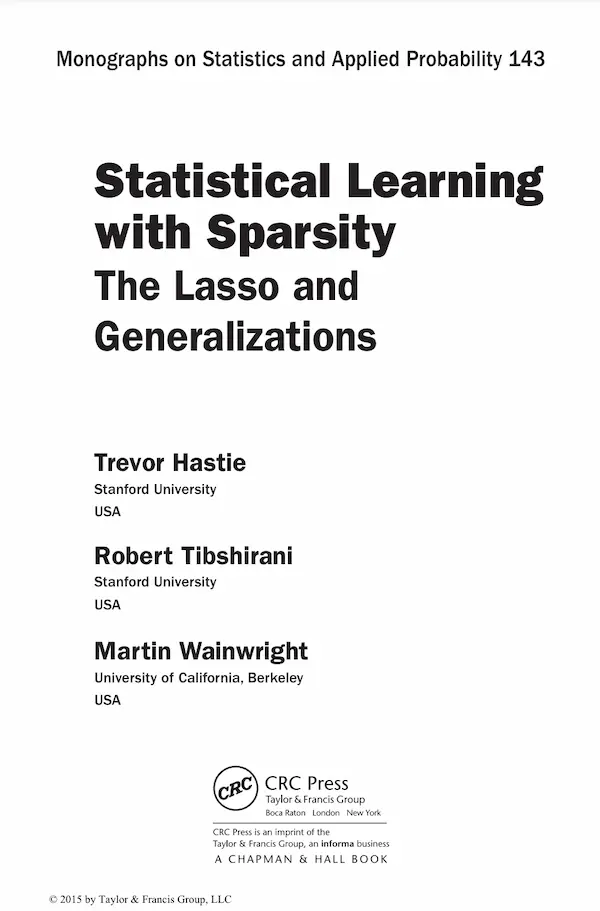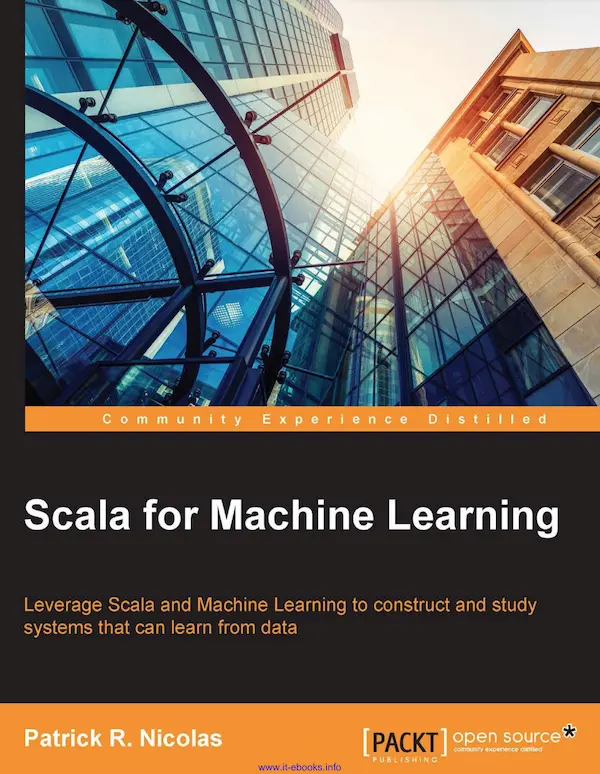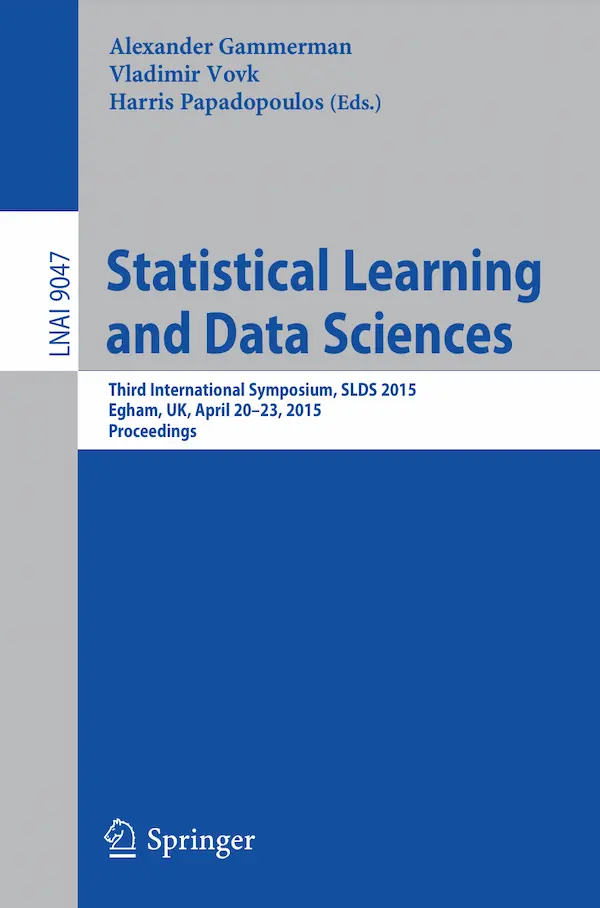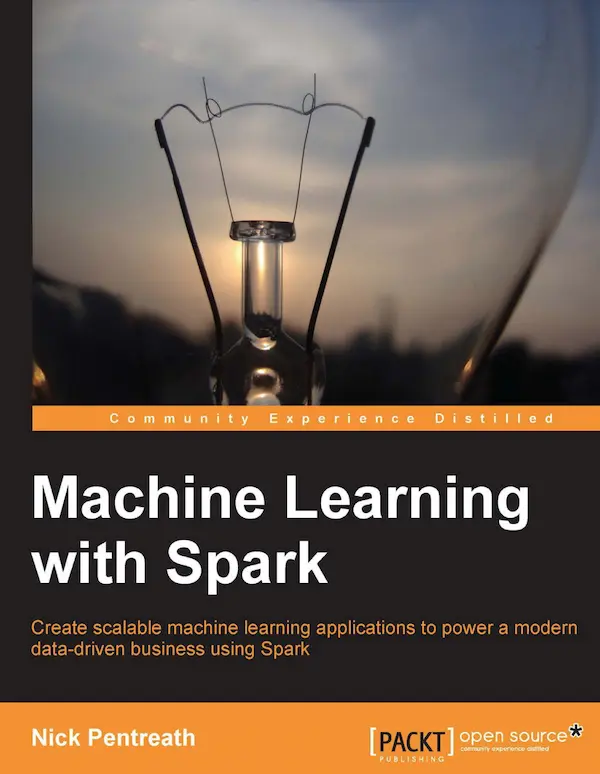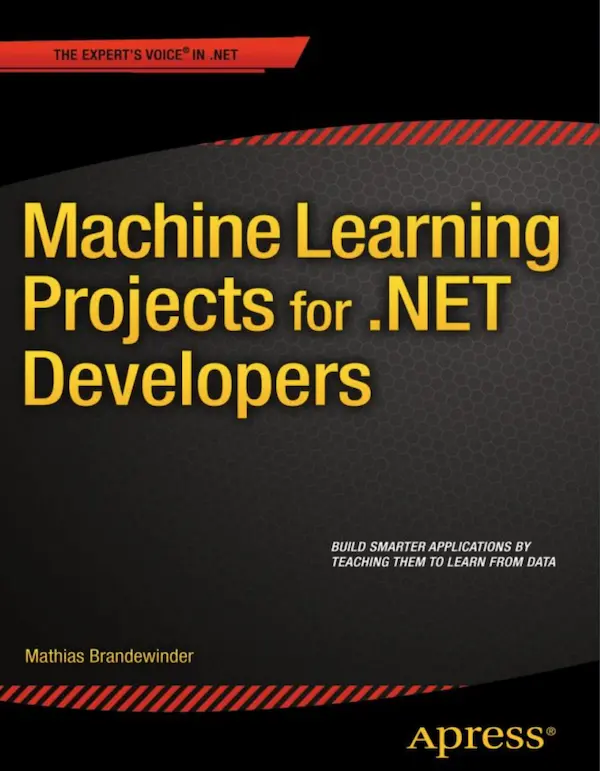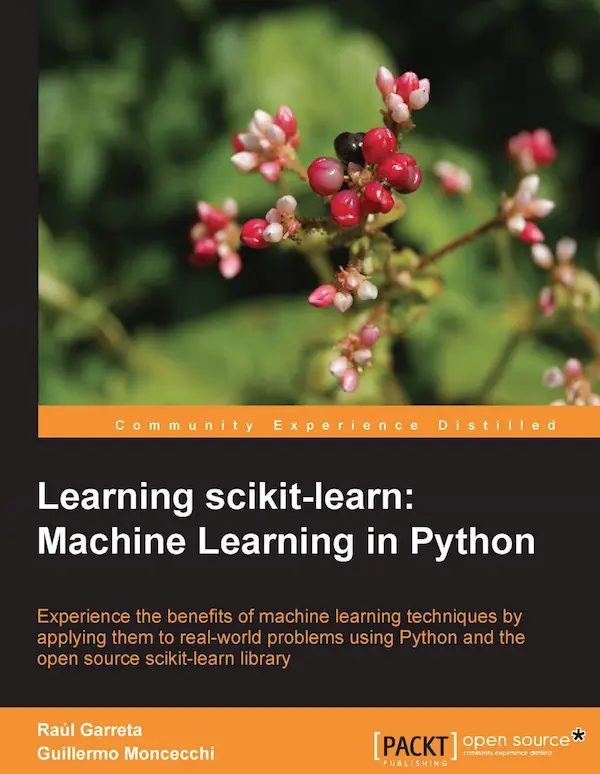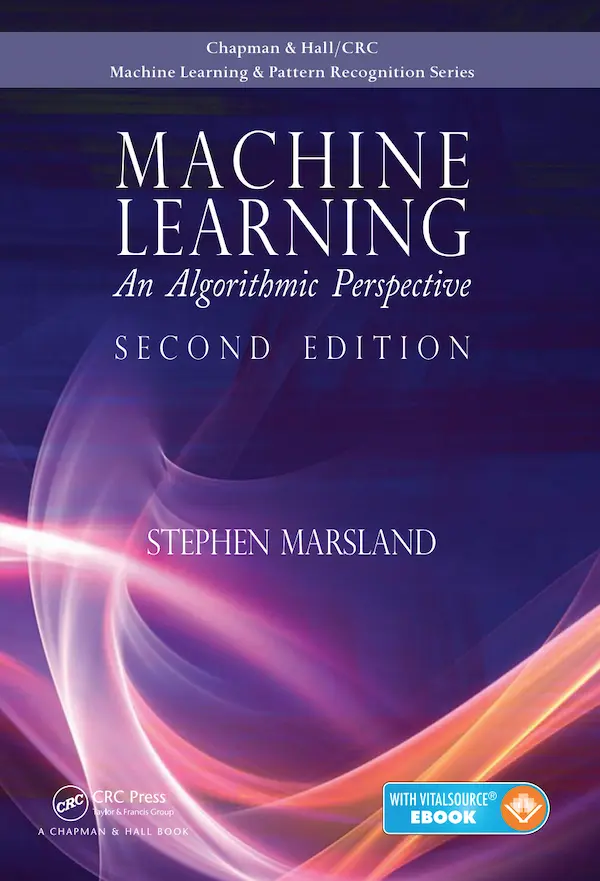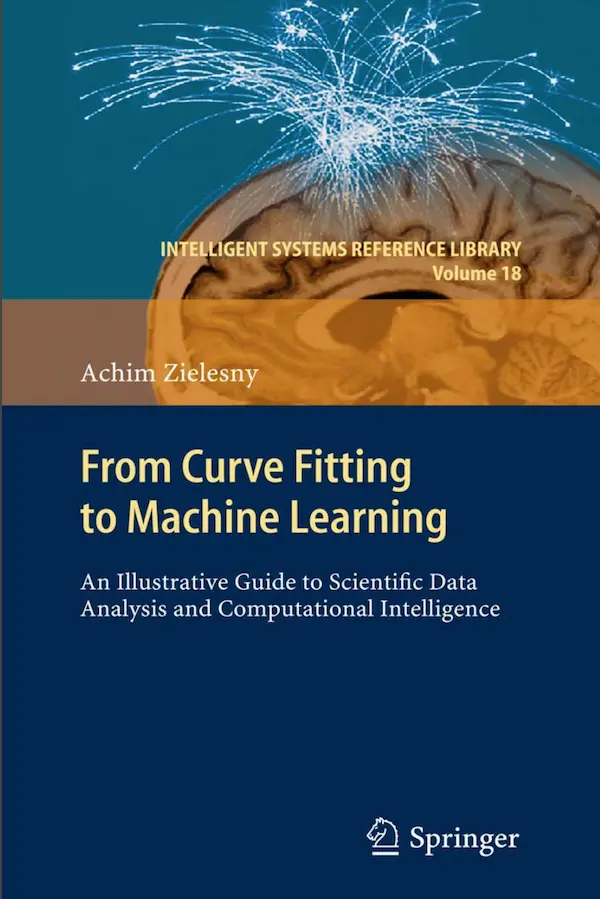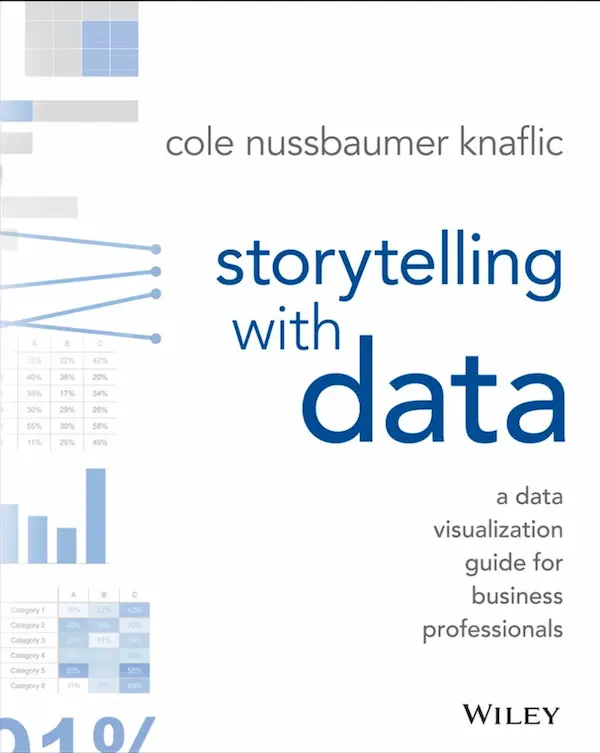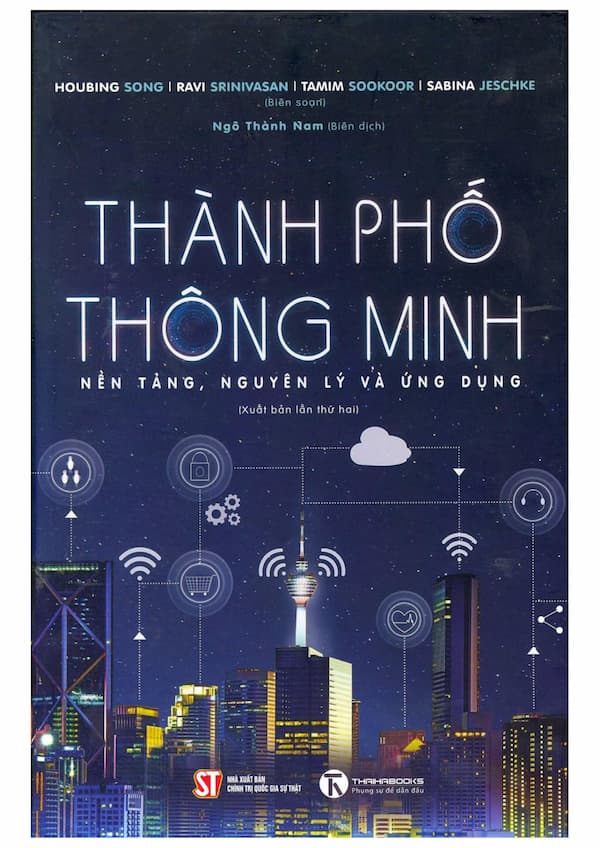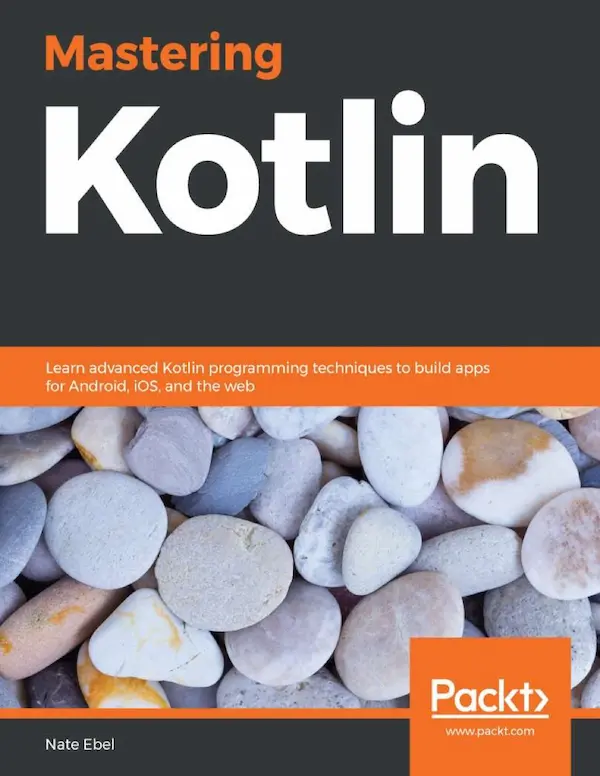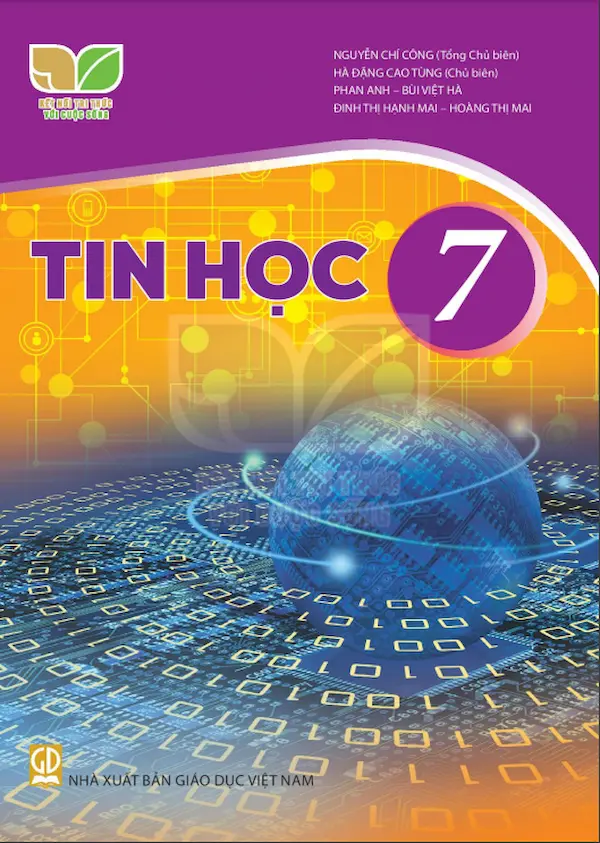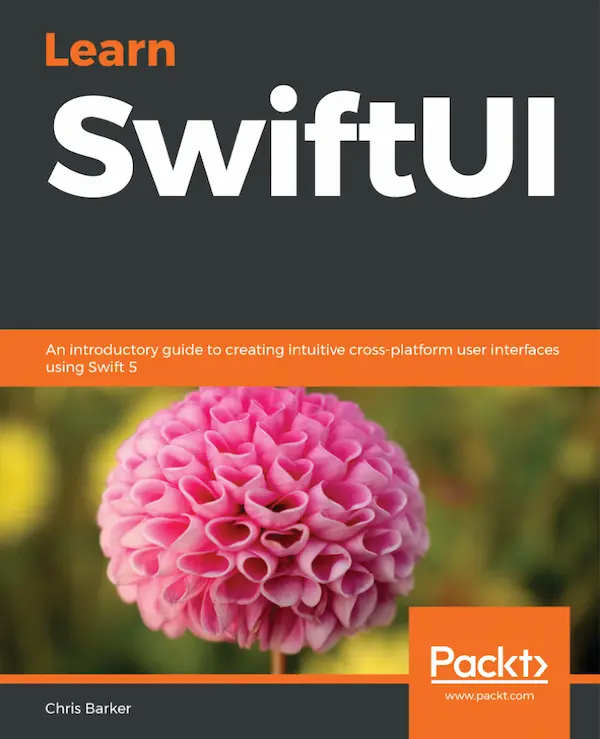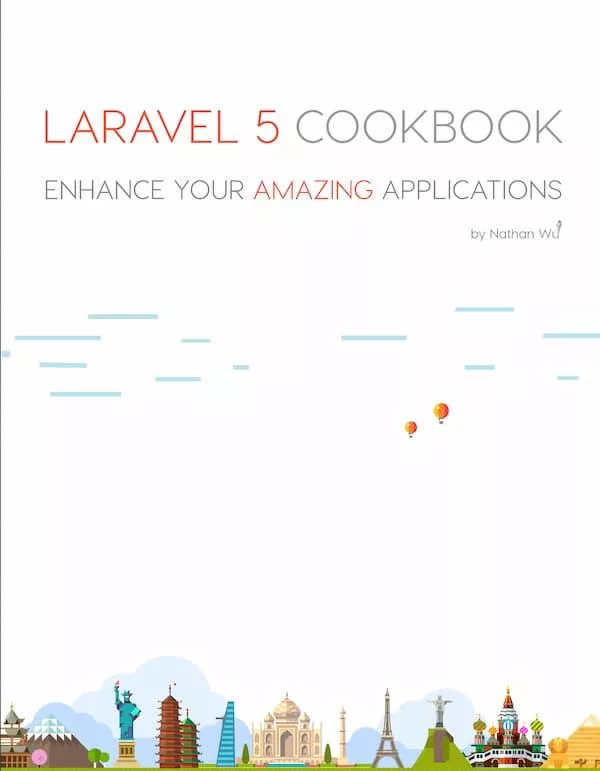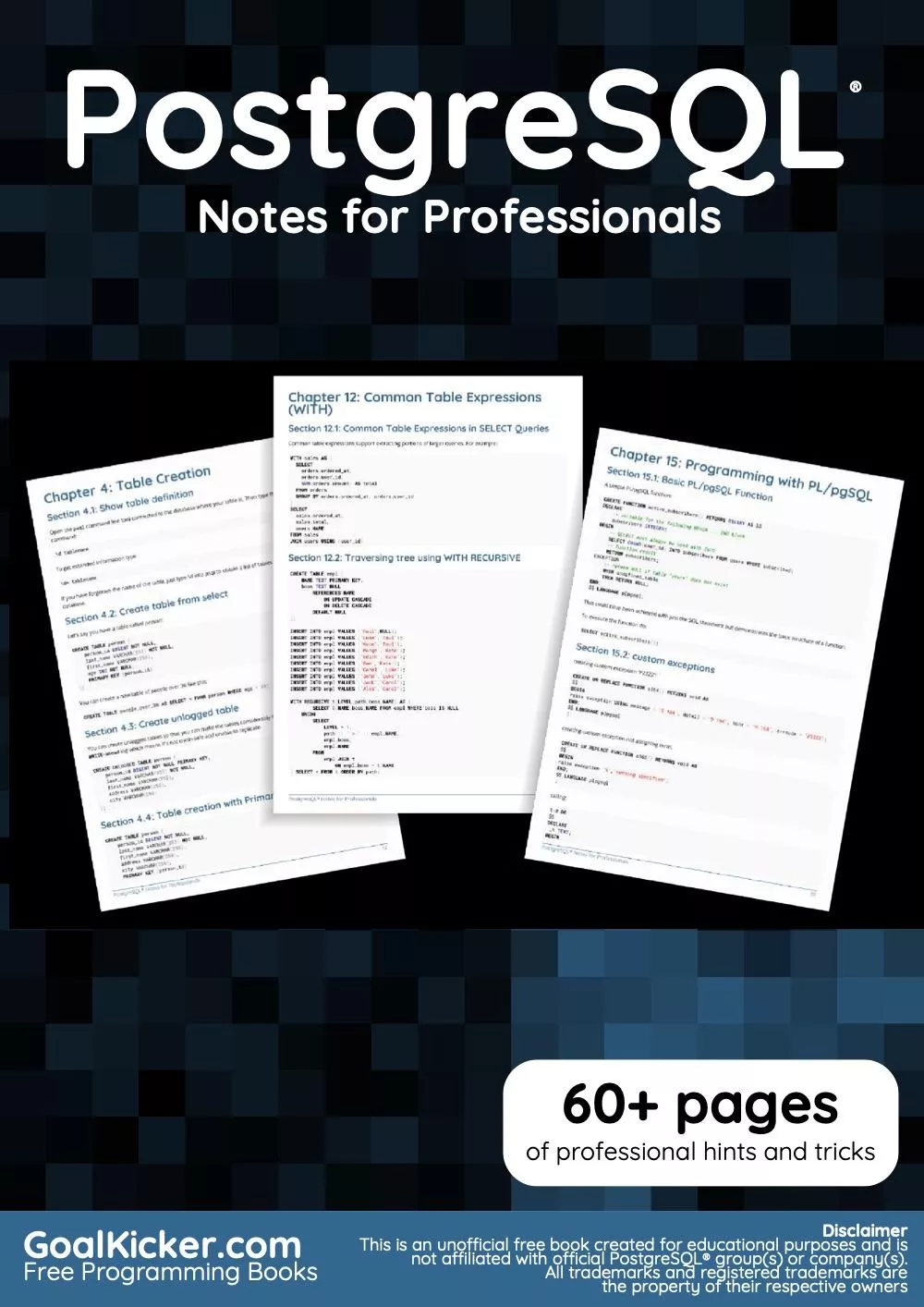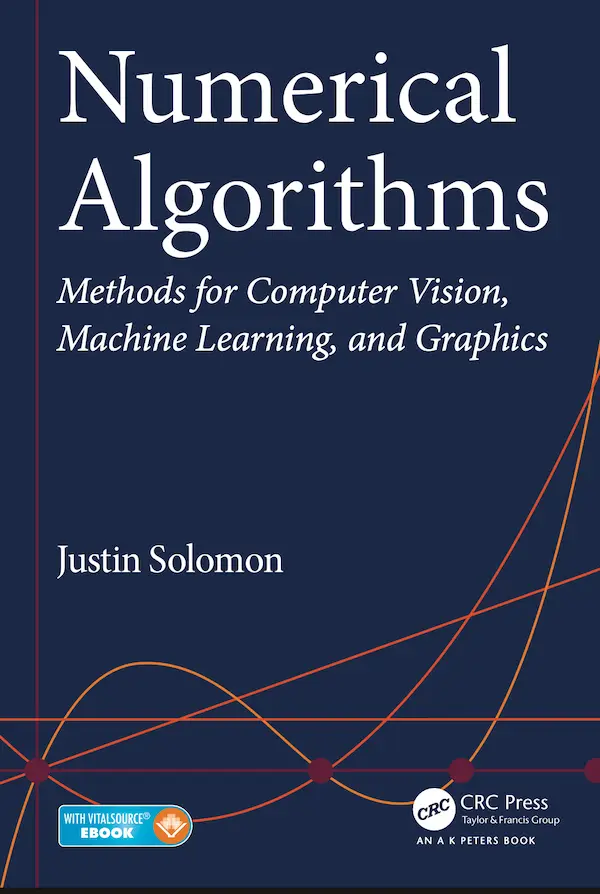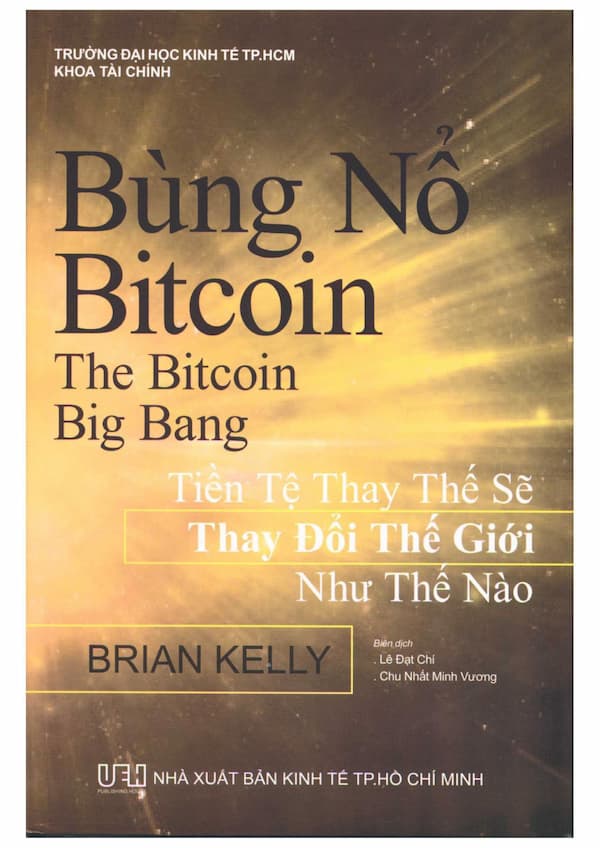
In this monograph, we have attempted to summarize the actively developing field of statistical learning with sparsity. A sparse statistical model is one having only a small number of nonzero parameters or weights. It represents a classic case of “less is more”: a sparse model can be much easier to estimate and interpret than a dense model. In this age of big data, the number of features measured on a person or object can be large, and might be larger than the number of observations. The sparsity assumption allows us to tackle such problems and extract useful and reproducible patterns from big datasets.
The ideas described here represent the work of an entire community of researchers in statistics and machine learning, and we thank everyone for their continuing contributions to this exciting area. We particularly thank our colleagues at Stanford, Berkeley and elsewhere; our collaborators, and our past and current students working in this area. These include Alekh Agarwal, Arash Amini, Francis Bach, Jacob Bien, Stephen Boyd, Andreas Buja, Emmanuel Candes, Alexandra Chouldechova, David Donoho, John Duchi, Brad Efron, Will Fithian, Jerome Friedman, Max G’Sell, Iain Johnstone, Michael Jordan, Ping Li, Po-Ling Loh, Michael Lim, Jason Lee, Richard Lockhart, Rahul Mazumder, Balasubramanian Narashimhan, Sahand Negahban, Guillaume Obozinski, Mee-Young Park, Junyang Qian, Garvesh Raskutti, Pradeep Ravikumar, Saharon Rosset, Prasad Santhanam, Noah Simon, Dennis Sun, Yukai Sun, Jonathan Taylor, Ryan Tibshirani,1 Stefan Wager, Daniela Witten, Bin Yu, Yuchen Zhang, Ji Zhou, and Hui Zou. We also thank our editor John Kimmel for his advice and support.
Stanford University and University of California, Berkeley
Trevor Hastie
Robert Tibshirani
Martin Wainwright
The ideas described here represent the work of an entire community of researchers in statistics and machine learning, and we thank everyone for their continuing contributions to this exciting area. We particularly thank our colleagues at Stanford, Berkeley and elsewhere; our collaborators, and our past and current students working in this area. These include Alekh Agarwal, Arash Amini, Francis Bach, Jacob Bien, Stephen Boyd, Andreas Buja, Emmanuel Candes, Alexandra Chouldechova, David Donoho, John Duchi, Brad Efron, Will Fithian, Jerome Friedman, Max G’Sell, Iain Johnstone, Michael Jordan, Ping Li, Po-Ling Loh, Michael Lim, Jason Lee, Richard Lockhart, Rahul Mazumder, Balasubramanian Narashimhan, Sahand Negahban, Guillaume Obozinski, Mee-Young Park, Junyang Qian, Garvesh Raskutti, Pradeep Ravikumar, Saharon Rosset, Prasad Santhanam, Noah Simon, Dennis Sun, Yukai Sun, Jonathan Taylor, Ryan Tibshirani,1 Stefan Wager, Daniela Witten, Bin Yu, Yuchen Zhang, Ji Zhou, and Hui Zou. We also thank our editor John Kimmel for his advice and support.
Stanford University and University of California, Berkeley
Trevor Hastie
Robert Tibshirani
Martin Wainwright



